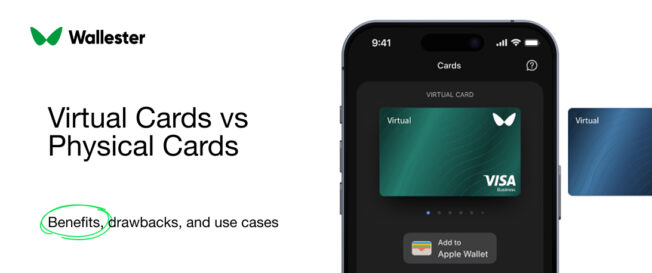Supplier and marketplace fees can quietly chip away at profit when they are left to run without control. Invoices arrive from different vendors, currencies shift, and marketplace platforms often add small charges that escape attention until month-end. Without a clear process, finance teams struggle to see the true cost of their supply chain and can end up paying more than expected. Bringing all supplier and marketplace spending into one organised system helps managers spot trends early, negotiate fairer terms, and keep budgets accurate even as operations grow across borders.
What is spend management?
Spend management is the practice of planning, monitoring, and improving every pound a company spends. It reaches beyond simple bookkeeping to give a complete view of how and why money moves through the business. A well-run programme shows finance leaders where costs are rising, which purchases add value, and where savings can be made.
Key aims of spend management are to:
- build an accurate picture of all company spending
- highlight unnecessary costs or duplicate purchases
- support reliable forecasting
- provide the evidence needed for stronger supplier negotiations
With timely and trustworthy data they can forecast budgets with confidence, identify waste before it becomes a problem, and strengthen their position when negotiating with suppliers. Effective spend management touches everything from daily office costs to long-term supplier contracts, giving decision makers the insight to guide strategy rather than react to surprises.
What is supplier expense management?
Supplier expense management focuses on the payments made to external vendors and service providers. While spend management looks at every outgoing pound, supplier expense management zooms in on the invoices that come from partners who deliver goods or services. It checks that every payment matches agreed terms, prevents duplicates, and reveals opportunities to renegotiate prices or consolidate vendors. When finance teams have precise records of each supplier payment they can track trends by vendor or category, pay invoices on time, and maintain healthy working relationships built on transparency.
In practice, supplier expense management helps teams:
- verify that invoices match contract prices and quantities
- keep payments punctual to avoid penalties or damaged relationships
- monitor vendors that consistently deliver the best value
- catch price changes or service issues before they escalate
How spend management differs from supplier expense management
The two disciplines are closely linked but serve different purposes. Spend management offers a company-wide view of all expenses, whereas supplier expense management concentrates on the smaller circle of payments to outside vendors. Knowing the difference allows businesses to assign clear responsibilities and select technology that fits each task.
The scope
Spend management spans the entire organisation, from travel budgets and marketing campaigns to IT subscriptions and raw-material purchases. Supplier expense management narrows the focus to vendor invoices and marketplace fees, making it easier to track supplier performance and enforce contract compliance.
Involvement of stakeholders
Spend management touches every department, it draws in finance, procurement, department heads and sometimes HR. Supplier expense management involves a tighter group – finance, procurement, and the operational managers who oversee vendor relationships – so decisions can be made more quickly but depend on accurate input from those teams.
Strategy implications
Spend management informs high-level budgeting and long-term cost-reduction plans. Supplier expense management shapes the day-to-day tactics of contract negotiation, renewal, and service review. Together they give leadership the insight to control overall expenditure while extracting the best value from each supplier.
Use of technologies
Modern spend management relies on platforms that consolidate transactions across departments and provide live analytics. Supplier expense management benefits from tools that match invoices to purchase orders, alert teams to price changes, and present vendor activity in clear dashboards. When the two systems work together they create a single source of truth for finance, making it easier to spot savings and avoid disputes.
Further Reading: The Complete Guide to Managing Expenses for Online Retailers and Resellers
What are the benefits of spend management?
A well-designed spend management programme delivers great results. Companies gain clearer visibility of where money goes and can redirect budgets to the areas with the highest return. Finance teams can forecast with greater accuracy, which supports confident investment decisions and protects cash flow. Reliable data also gives procurement teams stronger leverage in supplier negotiations, leading to better pricing and service agreements. Compliance improves too, as every transaction follows agreed internal policies and meets regulatory requirements across different markets.
The main rewards of mature spend management include:
- measurable savings through early detection of overpayments
- accurate forecasting that supports long-term planning
- stronger negotiating power based on verified spend data
- lower compliance risk
- greater transparency for executives and department managers alike

What are the challenges of spend management?
Managing supplier expenses becomes more complicated as a company grows. Different departments start working with their own vendors, contracts renew on separate schedules, and payments are made through a mix of systems. Finance teams often discover that essential data is scattered across spreadsheets, email chains and accounting tools. Without a central source of truth, small mistakes can multiply.
Here are the most common difficulties:
- invoices that are accidentally paid twice because records are incomplete
- missed early-payment discounts caused by slow approval processes
- price increases that go unnoticed until the billing cycle is complete
- weak visibility of supplier performance, which limits negotiating power
Each issue may seem minor on its own, but together they lead to budget overruns and unnecessary pressure on cash flow.
Further Reading: Top Expense Management Challenges for SMBs (And How to Solve Them)
Technology’s impact on cross-border expense management
Working with suppliers in more than one country adds another layer of complexity. Each market follows its own tax rules and payment practices, while currency rates can shift within hours. Manually converting and reconciling every invoice becomes a slow and error-prone task. Modern expense management platforms reduce this friction by bringing all international transactions into one system.
Key capabilities to look for are:
- real-time currency conversion that keeps every invoice in a single reporting standard
- automatic application of local tax rules, removing the need for manual checks
- a central dashboard that shows domestic and international payments side by side
- alerts for upcoming renewals or sudden cost changes so finance teams can act quickly
With these tools in place, budgets can be planned with greater accuracy and cross-border approvals can be completed in minutes instead of days.
How technology helps with supplier expense management
Digital platforms now provide the level of control that manual systems cannot offer. They automatically match invoices to purchase orders, flag discrepancies, and update budgets the moment a payment is made. Mobile applications allow managers to approve expenses or upload receipts from anywhere, keeping records complete and shortening processing times.
Analytics built into these tools reveal trends that would otherwise stay hidden. Finance teams can identify rising costs with a particular vendor, spot unexpected increases in marketplace fees, or detect licences that are paid for but rarely used. With this insight they can renegotiate contracts, consolidate suppliers, or redirect budgets before small leaks become serious losses.
What software to choose for seamless expense management?
Choosing the right platform depends on the size of the company, the number of suppliers and the systems already in use, but a few capabilities should be non-negotiable.
The software should give managers live visibility of every payment so they can act the moment something looks unusual. Support for multiple currencies is important for teams that work across borders, while smooth integration with accounting or enterprise planning tools keeps financial reports accurate without extra data entry. Detailed reporting by vendor, category and region helps during audits and negotiations, and strong access controls protect sensitive information while keeping purchasing rules consistent as the business expands.
Further Reading: How to Build an Expense Policy That Actually Works
Streamline your supplier expense management with Wallester Business
Wallester Business blends virtual card issuance with a full expense platform, all built for modern teams. The platform lets you issue virtual and physical Visa cards instantly, tailor spending controls, monitor every transaction in real time, and tie it all seamlessly into your accounting system. What makes it exceptional is how all these elements work together.

Here’s what Wallester offers:
- Instant card issuance – virtual or physical cards go live in minutes, ready for immediate use.
- Spending limits & policy controls – set limits by card, department, or vendor; freeze cards instantly when needed.
- Real-time dashboards & alerts – see transactions the moment they happen and get notified of suspicious activity.
- Receipt capture & automated reporting – users can upload receipts; the system matches them to transactions and generates clean reports.
- Accounting & system integration – connect to tools like Xero, QuickBooks, and export statement data effortlessly.
- Multi-currency & global readiness – works across international vendors, with tools to deal with cross-border transactions.
- Shared virtual cards & team use – allow multiple users to access the same card while each expense appears separately in the ledger.
The platform is backed by APIs that allow developers to build custom workflows, automate approval logic, and push data into internal systems.
In side-by-side comparisons, reviewers highlight key features such as expense tracking, spend control, spend analysis, multi-currency support, and supplier management as standout capabilities.
In sum, Wallester Business is particularly strong for companies that want to centralise supplier payments, keep full clarity on every pound spent, and avoid the mess of disconnected systems.


